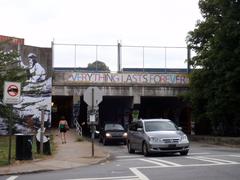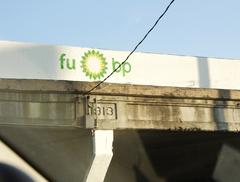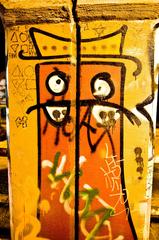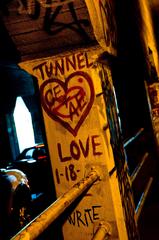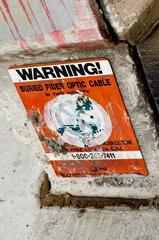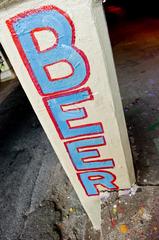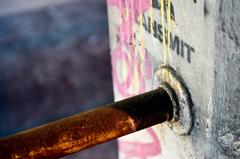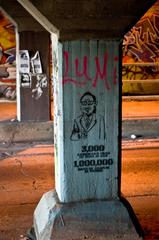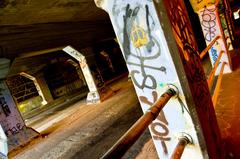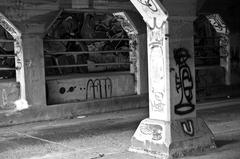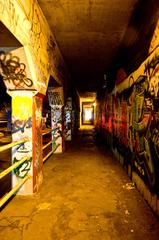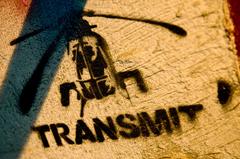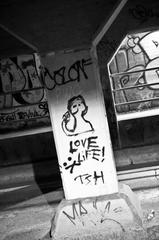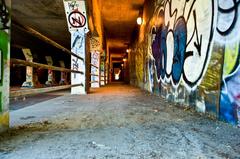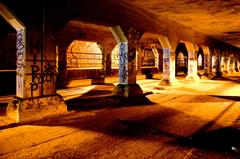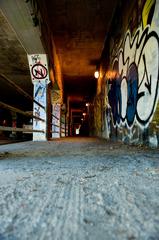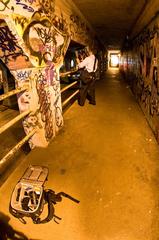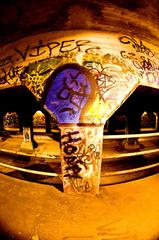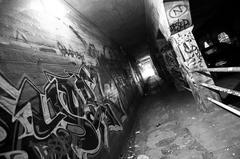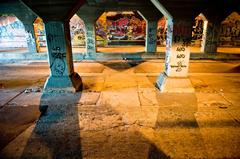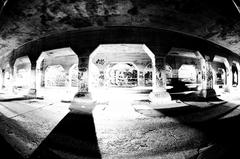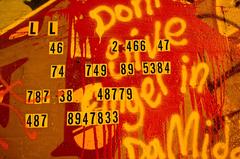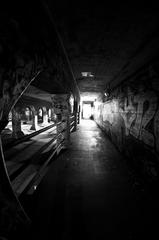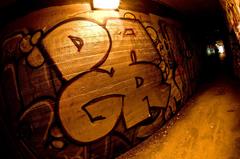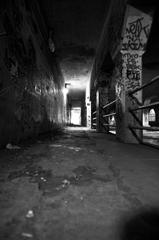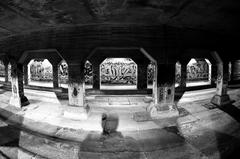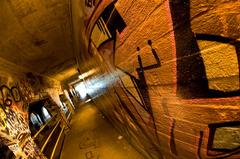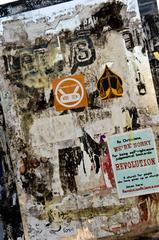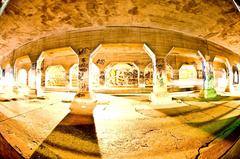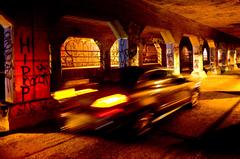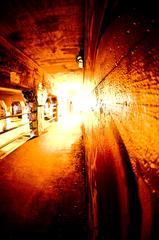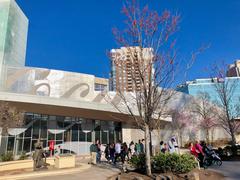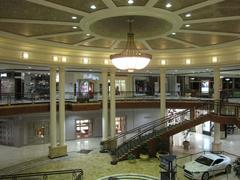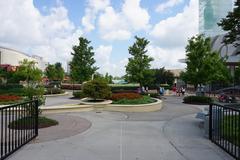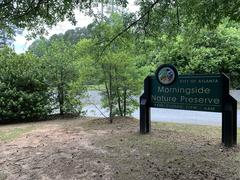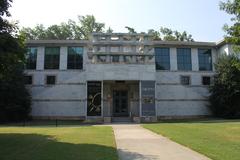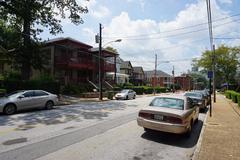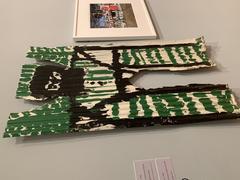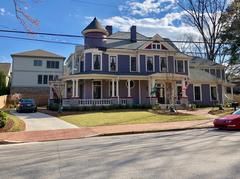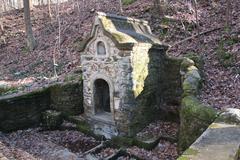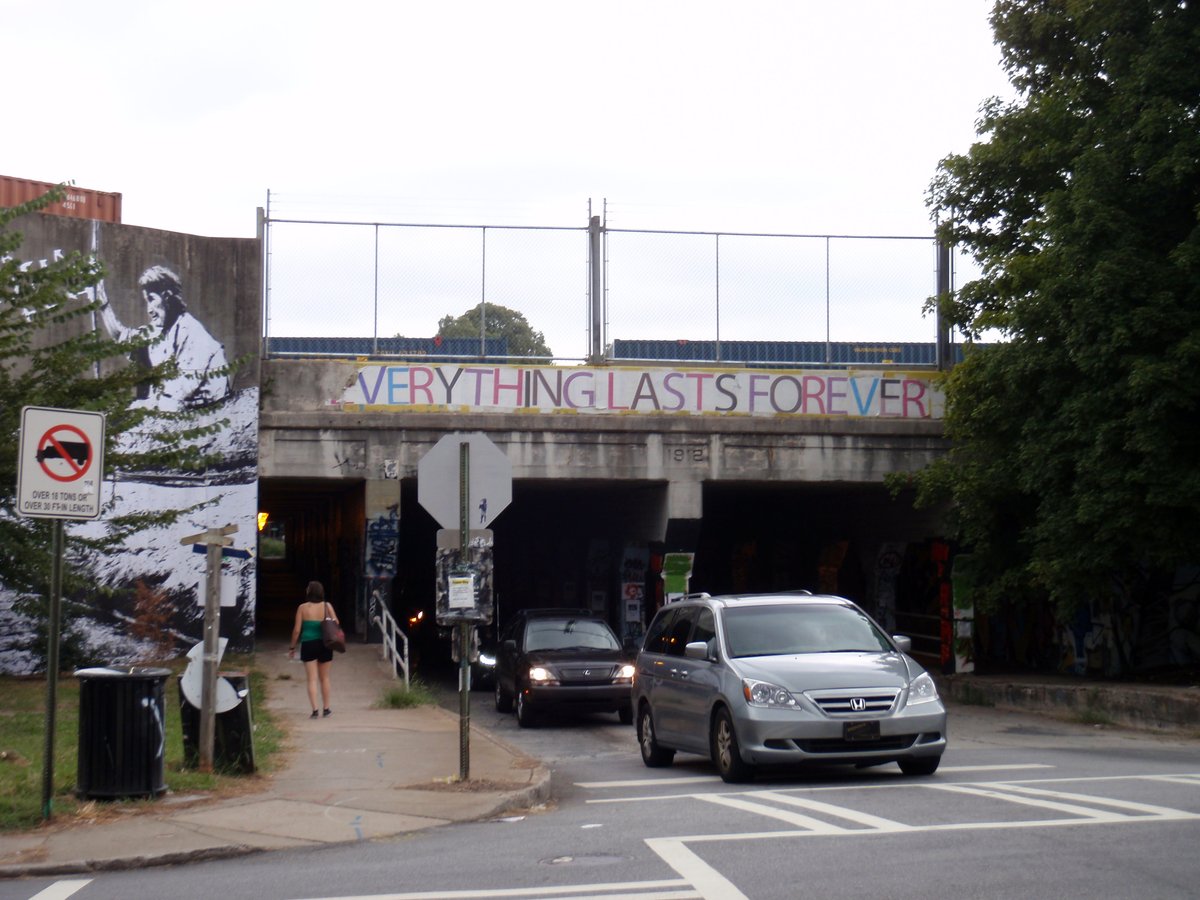
Visiting Hours and Ticket Information for Krog Street Southeast in Atlanta
Date: 19/07/2024
Introduction
Krog Street Southeast, situated in the vibrant heart of Atlanta, Georgia, is a locale rich in history and cultural allure. Initially developed during the post-Civil War Reconstruction era, Krog Street transitioned from an industrial hub to a modern-day cultural epicenter, making it a must-visit for anyone interested in Atlanta’s past and present. The area’s industrial roots are exemplified by historical landmarks such as the Atlanta Stove Works, which contributed significantly to Atlanta’s economy in the late 19th and early 20th centuries (Atlanta Stove Works History). Today, Krog Street is a bustling community enriched by the transformative Atlanta BeltLine project, which has revitalized the area, turning old warehouses into trendy lofts, retail spaces, and the iconic Krog Street Market (Atlanta BeltLine). The Krog Street Tunnel, a living canvas for street art, adds to the area’s dynamic cultural scene, making it a focal point for both locals and tourists (Krog Street Tunnel). This comprehensive guide will delve into the historical significance, key attractions, and practical information for making the most of your visit to Krog Street Southeast, Atlanta.
Table of Contents
- Introduction
- Early Development and Industrial Era
- The Impact of the BeltLine
- Krog Street Market
- Krog Street Tunnel
- Preservation and Modernization
- Cultural Significance
- Visitor Information
- Visitor Tips
- FAQ Section
- Conclusion
Exploring Krog Street Southeast, Atlanta - History, Market, and Visitor Tips
Early Development and Industrial Era
Krog Street Southeast has a rich history dating back to the late 19th and early 20th centuries. Developed as part of Atlanta’s expansion during the post-Civil War Reconstruction era, the area became a hub for factories and warehouses. One notable establishment was the Atlanta Stove Works, founded in 1889. The factory produced cast iron stoves and other metal goods, becoming one of the largest employers in the area (Atlanta Stove Works History). The industrial activity shaped the neighborhood’s character, making it a bustling hub of activity.
The Impact of the BeltLine
The decline of industrial activity in the mid-20th century led to a period of stagnation for Krog Street. However, the area experienced a renaissance with the advent of the Atlanta BeltLine project in the early 2000s. The BeltLine, a sustainable redevelopment project, aimed to transform 22 miles of unused railroad corridors into a network of public parks, multi-use trails, and transit. Krog Street, situated along the Eastside Trail of the BeltLine, became a focal point of this transformation (Atlanta BeltLine). The project revitalized the area, repurposing old warehouses into trendy lofts, restaurants, and retail spaces.
Krog Street Market
A key milestone in Krog Street’s history is the opening of the Krog Street Market in 2014. Housed in a 1920s-era warehouse, the market features a variety of local food vendors, artisans, and retailers, making it a popular destination for both locals and tourists (Krog Street Market). The adaptive reuse of the historic building has preserved its architectural integrity while providing a modern space for commerce and community gatherings.
Krog Street Tunnel
Another iconic landmark is the Krog Street Tunnel, which connects the Inman Park and Cabbagetown neighborhoods. The tunnel, originally constructed in 1912, has become a canvas for street art and graffiti, reflecting the area’s creative spirit. Over the years, it has hosted numerous art events and festivals, further cementing its status as a cultural hotspot. The tunnel’s ever-changing murals make it a dynamic and visually engaging attraction (Krog Street Tunnel).
Preservation and Modernization
Efforts to preserve Krog Street’s historical elements while embracing modernization have been crucial to its development. The neighborhood’s historic buildings, such as the Stove Works and the market, have been meticulously restored and repurposed, blending the old with the new. This approach has not only maintained the area’s historical charm but also ensured its relevance in contemporary urban life.
Cultural Significance
Krog Street’s transformation from an industrial hub to a vibrant cultural district highlights its significance in Atlanta’s urban landscape. The area’s history is a microcosm of the broader trends in urban development, reflecting the shifts from industrialization to post-industrial revitalization. The integration of historical preservation with modern amenities has made Krog Street a model for sustainable urban redevelopment.
Visitor Information
For those planning to visit Krog Street, here is some practical information to enhance your experience:
- Krog Street Visiting Hours: The Krog Street area is generally open to the public 24/7, but individual businesses within the market may have specific operating hours.
- Krog Street Tickets: Entry to the Krog Street area is free of charge, but some events or guided tours may have associated costs.
- Accessibility: The area is accessible to visitors of all mobility levels, with ramps and pathways that accommodate wheelchairs and strollers.
Visitor Tips
To make the most of your visit to Krog Street, consider the following tips:
- Explore the BeltLine: Take a walk or bike ride along the Eastside Trail to fully appreciate the area’s transformation and enjoy the scenic views.
- Visit Krog Street Market: Sample local cuisine and shop for unique goods at the market. It’s a great place to experience the local culture and history.
- Check Out the Street Art: Don’t miss the Krog Street Tunnel and its ever-changing murals. It’s a must-see for art enthusiasts.
- Historical Tours: Consider joining a guided tour to learn more about the area’s rich history and its role in Atlanta’s development.
- Local Events: Keep an eye out for local events and festivals, which often take place in and around Krog Street, offering a glimpse into the community’s vibrant culture.
FAQ Section
What are the visiting hours for Krog Street Market?
Krog Street Market is typically open from 8 AM to 10 PM, but individual vendor hours may vary.
Is Krog Street Tunnel accessible?
Yes, the Krog Street Tunnel is accessible to pedestrians, cyclists, and individuals with mobility devices.
Are there guided tours available?
Yes, several companies offer guided tours of the Krog Street area, focusing on its history, street art, and cultural significance.
What is the best time to visit?
Weekends are popular for visiting due to local events and a lively atmosphere, but weekdays offer a quieter experience.
Conclusion
In summary, Krog Street Southeast stands as a testament to Atlanta’s ability to blend historical preservation with modern innovation. From the industrial-era Atlanta Stove Works to the contemporary Krog Street Market housed in a 1920s warehouse, the area offers a unique glimpse into Atlanta’s evolving landscape. The Atlanta BeltLine has played a crucial role in this transformation, turning Krog Street into a vibrant hub for community engagement, economic growth, and cultural expression (Atlanta BeltLine). The Krog Street Tunnel, with its ever-changing graffiti, embodies the area’s dynamic artistic spirit, making it a must-see for art enthusiasts. Whether you’re exploring the BeltLine, savoring local cuisine at the market, or participating in community events, Krog Street Southeast offers a rich and multifaceted experience. For the latest updates and tips, consider downloading the Audiala app or following us on social media. Your journey through Krog Street will not only be a trip through Atlanta’s history but also an immersion into its contemporary cultural heartbeat.
References
- Atlanta Stove Works History. (n.d.). Retrieved from https://www.atlantastoveworks.com/history
- Atlanta BeltLine. (n.d.). Retrieved from https://beltline.org
- Krog Street Tunnel. (n.d.). Retrieved from https://www.atlantaga.gov/government/departments/parks-recreation/office-of-parks/krog-street-tunnel
- Krog Street Market. (n.d.). Retrieved from https://www.krogstreetmarket.com
